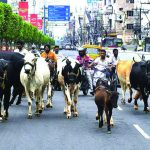The mayoral poll in New York, USA, and the legislative assembly elections in Bihar have coincided with each other. Zohran Mamdani, the newly elected mayor of the New York city invoked his immigrant status by playing ‘Dhoom Machale Le’, a 2004 Bollywood song, to orchestrate his victory. The votes of the immigrants are very crucial to the Democratic Party to counter the Republican Party’s American nationalism. The elites in India are consuming this victory as the victory of the multi-culturalism and Mamdani. For Americans, it is a victory of the Democratic Party.
Similar trends were noticed in Canada where Liberal Party’s Justine Trudeau tried to mobilise the immigrants from India to benefit electorally. Similarly, the migrants from Bihar also contribute to the success of political leaders or parties outside Bihar. Therefore, it is important to understand how the immigrants or migrants play a significant role in the multi-cultural electoral constituencies.
Knowing the importance of the migrants from North India, especially Bihar and Uttar Pradesh, in Mumbai, Bal Thackeray appointed Sanjay Nirupam as an editor of ‘Saamana’, a mouthpiece of Shiv Sena in Mumbai, in 1994. In 1995, Shiv Sena, along with Bharatiya Janata Party, formed the government in Maharashtra. Later on in 1996, Sena made Nirupam member of the Rajya Sabha. Nirupam was born in Rohtas, Bihar. Similarly political parties in Mumbai appropriated the north Indian leadership of Kripashankar Singh and Abu Azmi to attract migrants from the North India.
The remittances from USA do not alter the structure of political economy in India. Likewise, the remittances from Mumbai or any other city do not improve the socioeconomic realities in Bihar. The migration never becomes the focal issue on the manifestos of the political parties in Bihar. The visuals of Chhath Puja on Juhu Beach in Mumbai or Miramar and Baina beaches in Goa display their electoral strength.
Till 1969, Congress dominated politics in Bihar. The landed castes controlled the bureaucracy and enjoyed supremacy over the natural resources. In late 60s, the politics of representation and reservation to the marginalised communities became the electoral issue in politics, especially under the leadership of Karpuri Thakur. Under his tenure as chief minister, the category of Extremely Backward Classes (EBCs) or ‘Ati Pichada’ was introduced as per the recommendations of the Mungeri Lal Commission.
After the formation of Janata Dal in 1990, the Congress lost its hold over politics and never recovered from it since then. The three leaders – Lalu Prasad Yadav, Nitish Kumar and Ram Vilas Paswan – became the faces of the Janata rule. They emerged from the popular student movement known as ‘Total Revolution’ led by Jayprakash Narayan. Due to numerical imbalance and intra-caste animosities, the stalwarts of the marginalised communities split into leader-centric parties. Rashtriya Janata Dal (1997), Lok Janshakti Party (2000) and Janata Dal (United) (2003) were formed by Lalu Prasad Yadav, Ram Vilas Paswan and Nitish Kumar, respectively. Gradually the leaders from landed castes, especially Bhumihars, deserted Congress and started working with these leaders as ‘think-tanks’. Manoj Kumar Jha of RJD and Lalan Singh of JD(U) are the examples of such advisors.
The misrule and corruption during Yadav’s tenure became national talk. Prakash Jha’s movies such as ‘Gangaajal’ and ‘Apaharan’ equated the administration under Yadav in Bihar as ‘Jungle Raj’. BJP kept on backing Kumar since 1996 over differences with Yadav.
Meanwhile, Sushil Kumar Modi, another stalwart of the JP Movement built BJP in Bihar with the help of Kumar. After 2010, Nitish started feeling threatened by the rise of BJP and could not offer a stable government. In 2025, RJD and JD(U) are competing for the support of the upper castes. This has also constrained them to woo their traditional OBC, EBC and Dalit voters based on the anti-upper caste rhetorics.
Though Bihar has been largely controlled by leaders of the regional parties, but the social structure of the political economy has not been democratised. They kept on hammering on reservation and governance. Bihar is the first state to implement 50% reservation for women in local bodies in 2006 when Kumar was chief minister.
The Pasmanda Muslims are also listed in extremely backward communities and OBCs. The reservations have not arrested the migration from Bihar. The symbolism of ‘Ati-pichada’ has no takers now and the landed families have again reestablished in politics.
The manifestos of political parties promise a common thing ‘Rojgar’ (wages or employment). The promise of Rojgar and an inclusion in the economy are two different things. The reservation or cash incentives without inclusion in the economy will not complete the process of development. This would result in distressed movement of the working classes that many may glorify or defend as constitutional right to movement.
Politics in Bihar is a plethora of social identities without an inclusion in political economy. The major task is to free the industries and agriculture from the feudal relations. Otherwise, we may come across the migrants from Bihar dancing on Nirahua’s or Manoj Tiwari’s Bhojpuri songs in the victory rallies of politicians in Mumbai or somewhere else after the assembly results on November 14, 2025.
(Dr Nawoo Varak is Assistant Professor of Political Science at Government College of Arts, Science and Commerce, Khandola, Marcela, Goa.)





